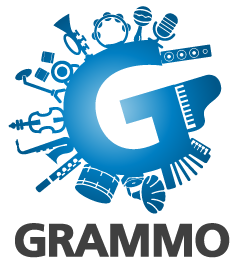

Legislation on Neighboring Rights
Law 2121/1993
The law 2121/1993 on “copyright, related rights and cultural matters” safeguards the neighboring rights and establishes the operation framework for Grammo and the other similar Copyrights and Neighboring Rights Collecting, Administrating and/or Protecting Societies and Organizations.
Law 4481/2017
Among the scopes of the law 4481/2017 on “collective management of copyright and neighboring rights, provision of multi-territory licences for online use of music and other matters of jurisdiction of the Ministry of Culture and Sports” is the adaptation to the national legislation of the Directive 2014/26/EU “on collective management of copyright and related rights and multi-territorial licensing of rights in music works for online uses in the internal market” (EE L 84), the regulation of the operation of societies for collective management or protection of copyright and neighboring rights and the independent management entities, as well as the amendment of the provisions of the law 2121/1993.
Copyright & Neighboring Right – Explanation of Terms
With the creation of a song two rights are derived for its creators: the moral right, meaning the right of the creator to protect his personal bond with the song and the financial right, meaning his right of financial exploitation of his work.
With the primary creation of a song, the composer and author possess the copyright on this musical work. Followingly, the interpreter, the musicians and the producing record company give to the song the form that we can listen to in a sound carrier (record, cassette, CD, etc). The interpreters, the musicians and the record companies possess the neighboring rights of the phonogram, meaning the specific set of sounds and voices as this has been recorded.
Relation between Copyright & Neighboring Right
In the cases where a license is required not only by the creator of the work that is embedded in the phonogram, but also by the interpreter, the musician and the phonogram producer for their contribution on the phonogram, the need of creator’s license is necessary and exists in parallel with the license of the interpreter, the musician and the phonogram producer. When a neighboring right holder’s license is not required, but an equitable and single remuneration is set, like when a sound carrier that has been legally produced is used for broadcasting or use before public, the interpreters, musicians and phonogram producers do not need to grant a license but are entitled to equitable remuneration, according to article 49 Law 2121/1993, while the copyright holders possess an absolute and exclusive right and without their license no broadcasting or use before public of their musical works embedded in a sound carrier can take place legally. This mechanism allows a balance between the two rights categories which do not conflict, as they are different rights.
Neither the law nor international treaties refer to a supremacy of one right over the other or the supremacy of one payment over the other. Since both rights operate in parallel it is self-evident that a payment is necessary for both rights categories, according to the rules provided by national legislation. It is finally worth mentioning that EU Directive 2001/29 for the information society recognizes the digital rights of the creator and the neighboring rights holders in the same text, equally for the rights holders (see articles 2, 3 and 4). Therefore everything leads towards the co-existence and parallel exercise of the two rights and not the supremacy of one over the other or otherwise the subordinate character of one compared to the other.
